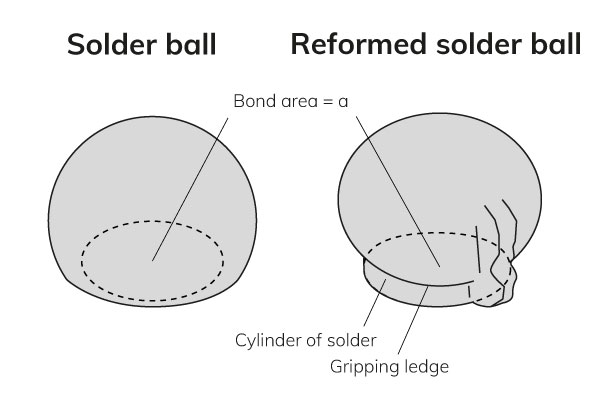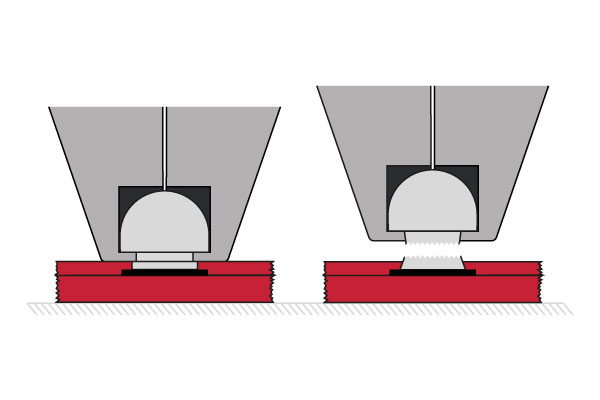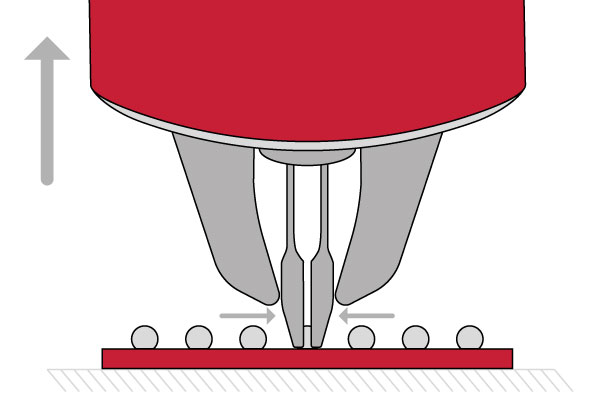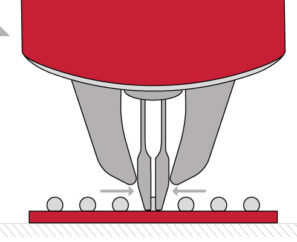As forerunners in bond testing, we aim to spread knowledge about bond testing in the industry. The Cold Bump Pull (CBP) test method is the ultimate solution for solder ball testing. That is why we have given our well-known Cold Bump Pull guide an update and a new look. Dig into this new version of “How to Cold Bump Pull” and learn about how to perform an optimal pull test on solder balls using tweezers.
Abstract
This extensive how-to consists of 12 paragraphs. This manual focuses on solder ball testing, but the principles apply equally to most bump testing. We touch on topics like what type of balls to test, tool design, and tool alignment. But most important; How to set up a Cold Bump Pull test?
At last, we explain some test method settings and share the most common failure modes for solder ball testing.
What is Cold Bump Pull?
The CBP test method is the ultimate solution for solder ball testing. The principles apply to bump testing on any ball.
CBP stands for Cold Bump Pull or Cold Ball Pull. To pull the ball it is necessary to reform the ball in a “mushroom” shape with a tweezer. Tweezers have special gripping jaws with cavities that reform the ball when the tweezers close. The jaws of the tweezers provide the pull grip. The tweezer applies an upward force and effectively pulls the ball away from the substrate, moving the Z-stage until the bond breaks or a pre-defined force threshold is achieved.
Do not worry about reforming the ball. Reforming is due to the load on the tool. It is better to get a higher test force by “over gripping” the ball so that the reforming cuts over the bond than “under gripping” the ball and risking unrealistic failure modes in the bond. Remember: We always seek to test the bond of interest in a way that generates the failure mode of interest, or the highest force.


Bond testing guidelines
Besides the how-to on Wire Pull (WP), we offer guides on how-to Cold Bump Pull (CBP) and Tweezer Pull (TP) and access to the relevant MIL-STD-883 standards. Feel free to use these guides to bond testing. Also, please reach out if you have any comments or specific questions regarding the application or your samples.
How to Wire Pull
This how-to on wire pull (WP) guides what to consider and how to perform a correct wire pull test. The main focus of this manual is on wire and ribbon pulls using wire hooks. Loop height measurement is also covered.

How to Cold Bump Pull
This how-to on Cold Bump Pull (CBP) guides what to consider and how to set up a correct Cold Bump Pull (CBP) test. It generally refers to solder ball testing, but the principles apply equally to most bump testing.

How to Tweezer Pull
This how-to on Tweezer Pull (TP) guides what to consider and how to perform a Tweezer Pull test or a Tweezer Peel test. Tweezer pull and peel tests usually are not challenging to do if you own the right equipment.

New distributor in Hungary
As the technology leader, we strive to have local representatives all around the world to provide local support worldwide. That is why we have added a new distributor to the team in Europe.
We want to welcome Senselektro Kft. to serve Hungary. Senselektro is already experienced with bond testing and is enthusiastic about being part of the xyztec team. After an intensive sales- and service training last week at the xyztec HQ in Panningen, Senselektro is ready to serve Europe.

Happy Chinese New Year
2022 is the year of the Tiger. Tigers are the third of the Chinese zodiacs. According to legend, Tiger was confident that no one could compete with its speed and vigor for the celestial race that would decide the order of the zodiac.
Chinese New Year 2022 falls on Tuesday, the 1st of February. Celebrations last up to 16 days, but only the first 7 days are considered a public holiday (January 31st–February 6th, 2022).
新年快乐
Xyztec wishes all the Chinese partners and customers happy holidays and a healthy Chinese New Year of the Tiger. May this New Year bring immense joy and happiness. Many blessings for you and your family in the year to come.


